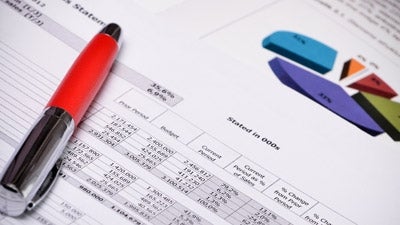
Now that you know how to set up your accounting system and how to hire a bookkeeper, its time to learn about some bookkeeping basics. You may have been avoiding this for a long time, but its easier than you think! Once you have a handle on the basics, the business won’t be running you. You’ll be running the business!
Let’s start with a chart of accounts. These are essentially the “files” your financial activity flows in and out of. Here is an example of what the chart of accounts would look like for a cake baker’s small business.
(The parenthesis indicates where those numbers finally show up in your financial reports.)
Example: A Chart of Accounts for a Baking Business
Cash in Checking Account (Balance Sheet)
Cash in Savings Account (Balance Sheet)
Sales (Profit and Loss Statement)
- Birthday Cakes
- Wedding Cakes
- Anniversary Cakes
- Holiday Cakes
- Gluten Free Cakes
- Cupcakes
Cost of Sales (Profit and Loss Statement)
- Baking Ingredients
- Decorating Supplies
- Boxes, Platters, No Edible Supplies
Expenses (Profit and Loss Statement)
- Advertising
- Web Expense
- Delivery Expense
- Equipment
- Office Expense
- Telephone Expense
- Insurance Expense
- Rent Expense
- Utility Expense
- Miscellaneous Supplies
- Taxes (If you earn a profit)
Retained Earnings (Balance Sheet)
Capital (Balance Sheet)
A Chart of Accounts for YOUR Business
Here is an explanation of the accounts you need to create for you own small business, and what should be recorded in each of them:
#1: Cash accounts are your transaction accounts. They enable you to receive and dispense cash. They’re always the first accounts. Hopefully, cash in is greater than cash out. That’s the objective. Easy, yes?
#2: Sales accounts indicate all the ways the business brings in revenues. These are all the different types of products or services you sell, by category. You can see, we’ve established some categories for different kind of cakes to satisfy most palates.
#3: Cost of sales (or Cost of Goods). Cakes cost you something to make. These are direct costs including direct materials and direct labor to create each masterpiece. If you deduct Cost of Sales from Revenues, you should have a positive number (may it always be). The result is your gross profit. This should be at least 30% of Revenues so you can pay operating expenses.
#4: Expenses. You can’t keep all the money you earn in Sales because you have to pay suppliers, utilities, insurance, rent etc. We highlighted some typical expenses categories, though your bookkeeper might find others. Web expense is pretty significant these days with video production and editing expenses. Be sure to capture ALL your web-related expenses.
#5: Retained Earnings. These are cumulative profits you keep in the business. The Balance Sheet will capture these.
#6: Capital or Investors Capital. This is what the original investors gave to the business to get it off the ground. You’ll find this on the Balance Sheet as well.
All these accounts feed only three key statements; The Profit and Loss Statement, the Cash Flow Statement and the Balance Sheet. Read these statements and you’ve got it nailed. They are your GPS for managing your business!
Many small business owners are scared off by the numbers. But the numbers are what run your business, and they are easier to understand than you think. If you’re looking for more help, we offer training videos, but you should feel free to leave questions in the comments section below!
If you’re a business owner who already has this stuff under control, please share your advice in the comments, too!
This article was originally published by Best Small Biz Help
Published: October 4, 2013
5638 Views
5638 Views












